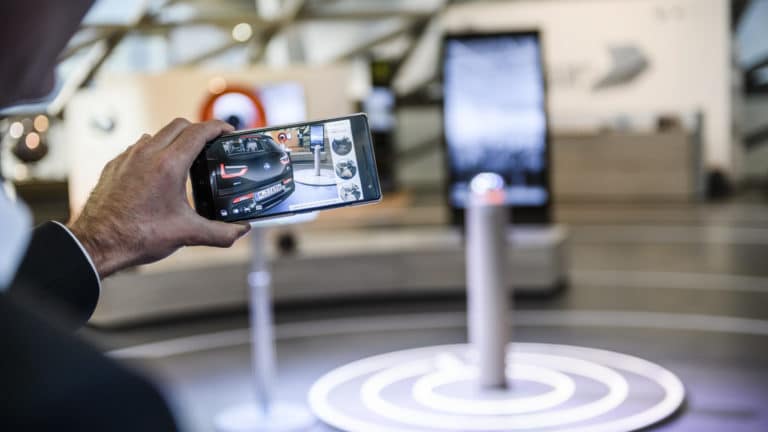
This post is adapted from ARtillery Intelligence’s report, AR Commerce: Monetization Comes Into View. It includes some of its data and takeaways. More can be previewed here and subscribe for the full report.
Picking up where we left off in examining AR’s evolution as a consumer commerce tool, what are the areas where it’s resonating most? Because it can visualize items in your home, the most value can be seen with bulky and expensive items that benefit from a more informed purchase.
For example, cars hit the marks for high-value AR visualization: big and expensive. According to a survey by ZeroLight, 82 percent of consumers “totally agree” that they’d like to see, explore and configure their next car using AR. 88.5 percent believe AR will influence their purchases.
The poster child of AR visualization for cars is BMW iVisualizer. Not only does it let you anchor and view a virtual car in your driveway viewed through your smartphone, but it lets you save customizations and research or buy the car locally. This brings it from novelty to attributable value.
“The issue was how do we get millennials, who don’t like going to dealerships and dealing with car salesmen, to interact with and configure the car?” Accenture’s Raffaella Camera (consultant for iVisualizer) told ARtillery Intelligence recently “That’s the type of ROI they’re looking for.”
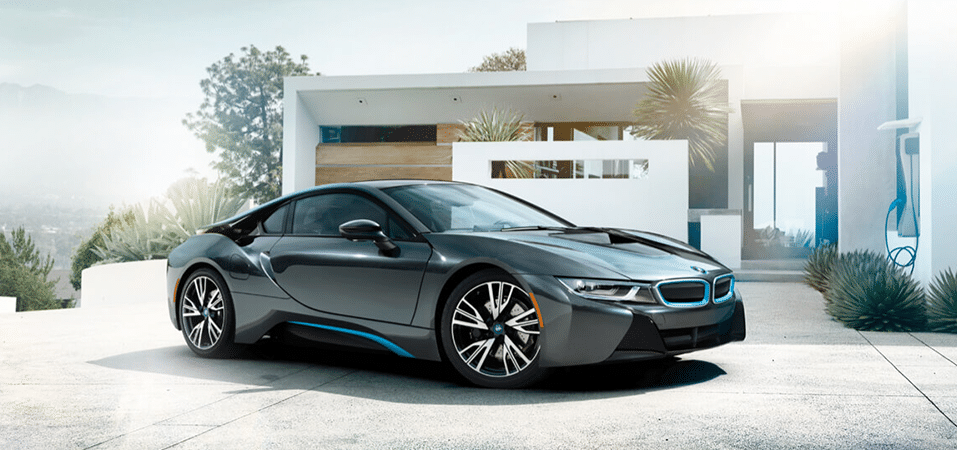
Compressing the Purchase Funnel
This underscores one of AR’s benefits which is to span upper funnel (brand engagement, awareness) and lower funnel (purchases) consumer activity. We’ve examined this full-funnel advantage in light of AR advertising, but it equally applies to brand-specific AR commerce.
“We have this link to jump from the app to the BMW web configurator,” said Accenture Digital’s Matteo Alberti on stage at June’s AWE conference. “This is very important because it continues the customer journey, and of course you can also search for your nearest dealer.”
According to BMW’s Stefan Biermann, the strategy is working. Specifically, more than 25 percent of app starts go from AR car visualization to the online configurator. From there they can begin to see prices and local dealer inventory, which BMW calls the “configurator jump.”
“In addition to the immersive experience and interaction with our cars, what we achieve is that twenty-five percent of all app starts then go one step further in essence in our sales funnel,” he said on stage. As they’re led through that funnel, they can see actual cars available near them.
That last part is key, as BMW realizes that no one buys a car sight unseen. Though iVisualizer (and AR in general) can be a valuable tool to onboard consumers into product engagement and contextualization, it’s not a silver bullet. People still want to see and touch the actual car.
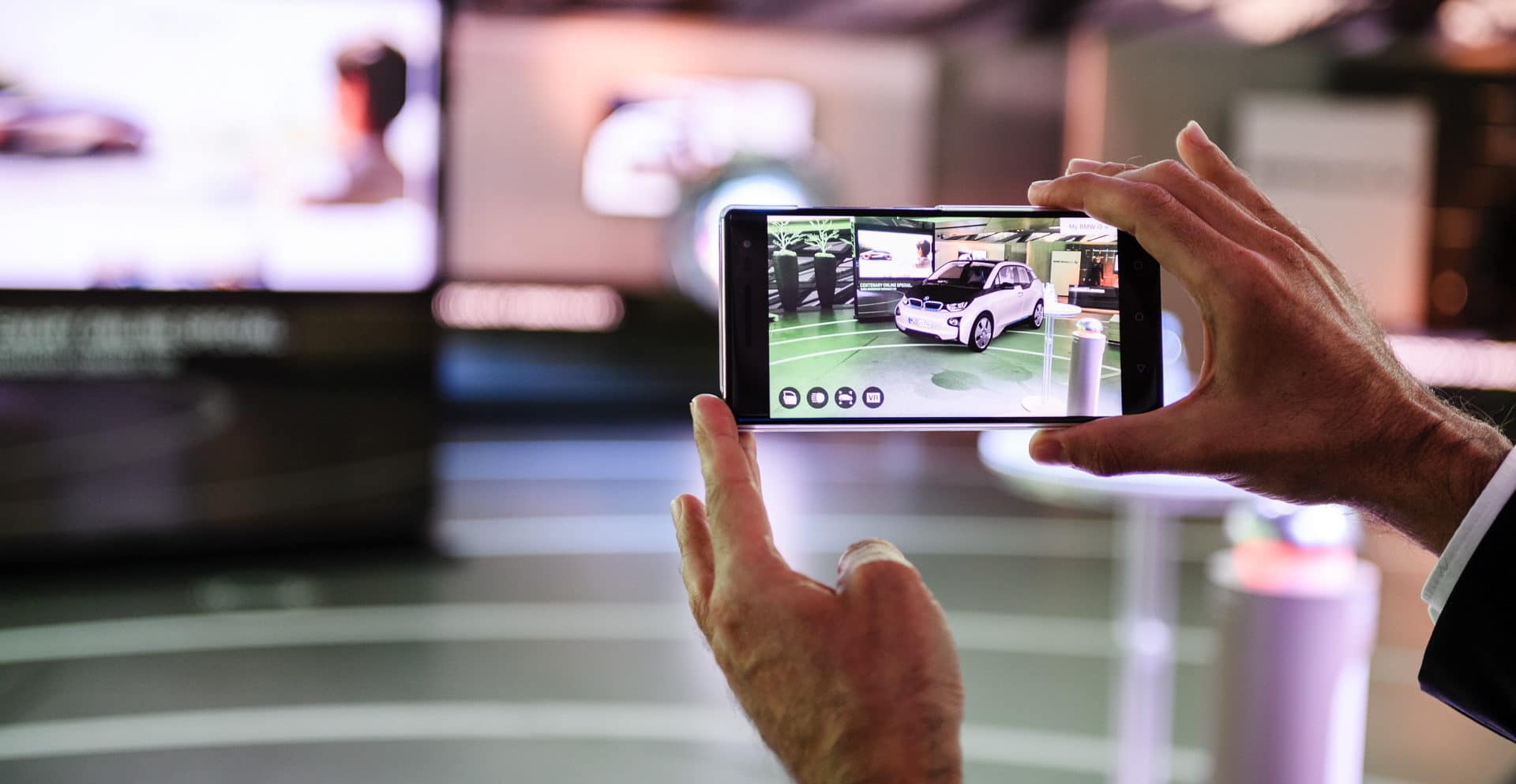
Empowered by Data
With that local/immediate gratification in mind, BMW designed the app to only visualize models that are available locally. That ensures high-intent users aren’t disappointed at the dealership. And it shows that optimized commerce — not AR novelty — is a guiding principle of the app.
“In 38 markets, you see the car that you can actually buy,” said Alberti. “This is very important. There is an engine in the app that basically selects and pushes to the customer exactly what you can actually configure and buy in your specific country.”
Also important is the data that BMW is able to collect from a large sample that’s engaged in a high-touch (literally) AR interaction with the product. Ingesting such data can inform regional sales patterns, supply-chain management, inventory and all kinds of marketing insights.
“Using analytics, you can get lots of information about what users prefer,” said Alberti, echoing sentiments we heard from Walmart. “This really adds to the business case. When you build such applications, basically you can collect lots of feedback in real-time about what consumers want.”
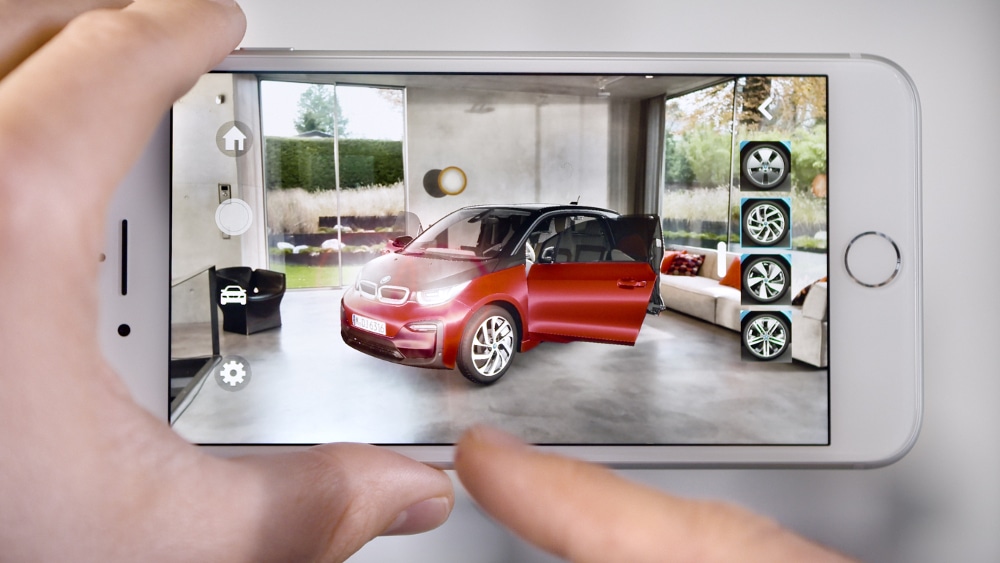
Always Be Closing
AR real estate innovator roOomy is built on a lot of the same visualization features, but with a twist. It not only lets you visualize new furniture around the house, but it also wants to sell you the house itself. This bolts AR furniture visualization to a logical context: real estate sales.
The three sides of its business model are furniture dealers, realtors and home buyers. Furniture dealers demo their products in a natural format, while real estate professionals can “stage,” homes in a more effective (and cheaper) way. And consumers get a more realistic picture of both.
“We can showcase a property in its full potential,” roOomy BD Director Taylor Wilding told AR Insider, “and at the same time, enhance the experience for the home shopper as they can furnish their new home right within the same context.”
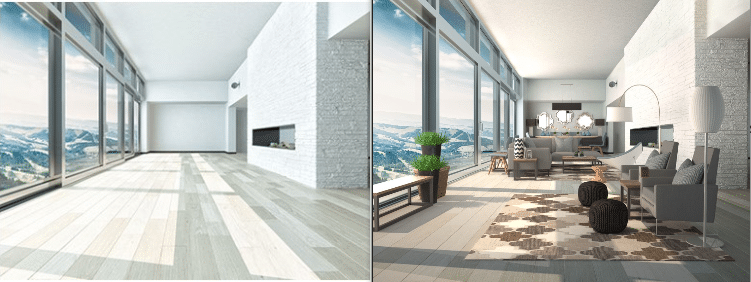
Combining all of these components has created a sort of Yin and Yang in roOomy’s interlinked business model. Its diversified revenue stream includes 3D modeling and rendering technology, affiliate revenue for furniture sales, and fees from real estate agents.
To do all this, Rooomy first converts furniture retailers’ 2D catalogues into 3D graphics. Then realtors can stage empty rooms with its library of 120,000 pieces, which home buyers view dynamically through its AR app. This natural habitat for furniture boosts conversions.
“A differentiating piece for us is that we’re helping retailers intercept customers at an earlier part of the buying cycle, during a home purchase,” said Wilding. “Someone moving will spend on furniture upwards of 5x what someone who isn’t moving will spend.”
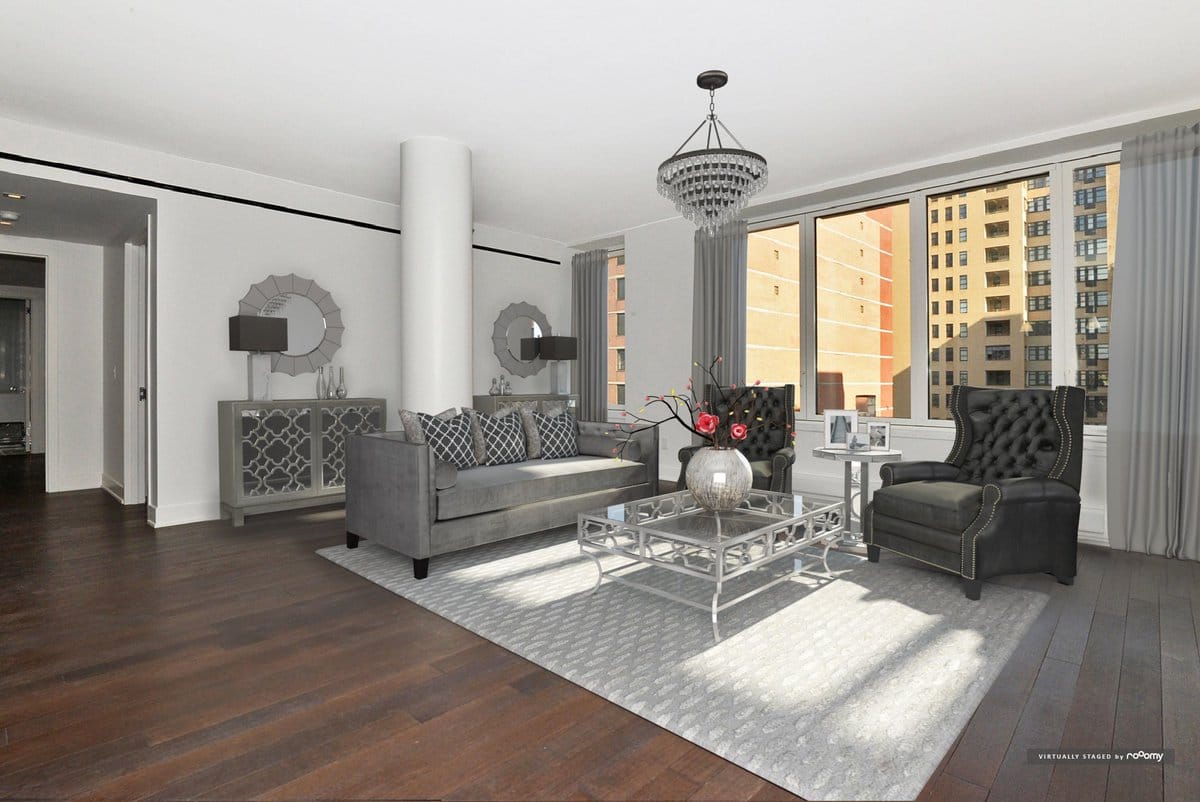
Learning Curve
Lastly, real estate agents themselves pay roOomy on a per-listing basis. And they tend to be early adopters, given a hunger for tools that can give them an edge in closing big deals. There’s also cost savings in virtual staging, and further incentive through a cut of furniture sales.
Of course, viewing a new home through the small window of your smartphone needs time to marinate as a consumer activity. But the Amazons and BMWs of the world could accelerate that learning curve, along with AR democratization and development brought by ARkit and ARCore.
“As eCommerce sites launch ARKit apps, it’s becoming more and more familiar. People understand exactly how to use it,” said Wilding. “And since ARCore and ARkit have been released, our modeling business for home furniture retailers has taken off.”
See more details about this report or continue reading here. *Data above represent wave I of the consumer survey. Wave II will be published next month.
For deeper XR data and intelligence, join ARtillery PRO and subscribe to the free AR Insider Weekly newsletter.
Disclosure: AR Insider has no financial stake in the companies mentioned in this post, nor received payment for its production. Disclosure and ethics policy can be seen here.
Header image credit: BMW
